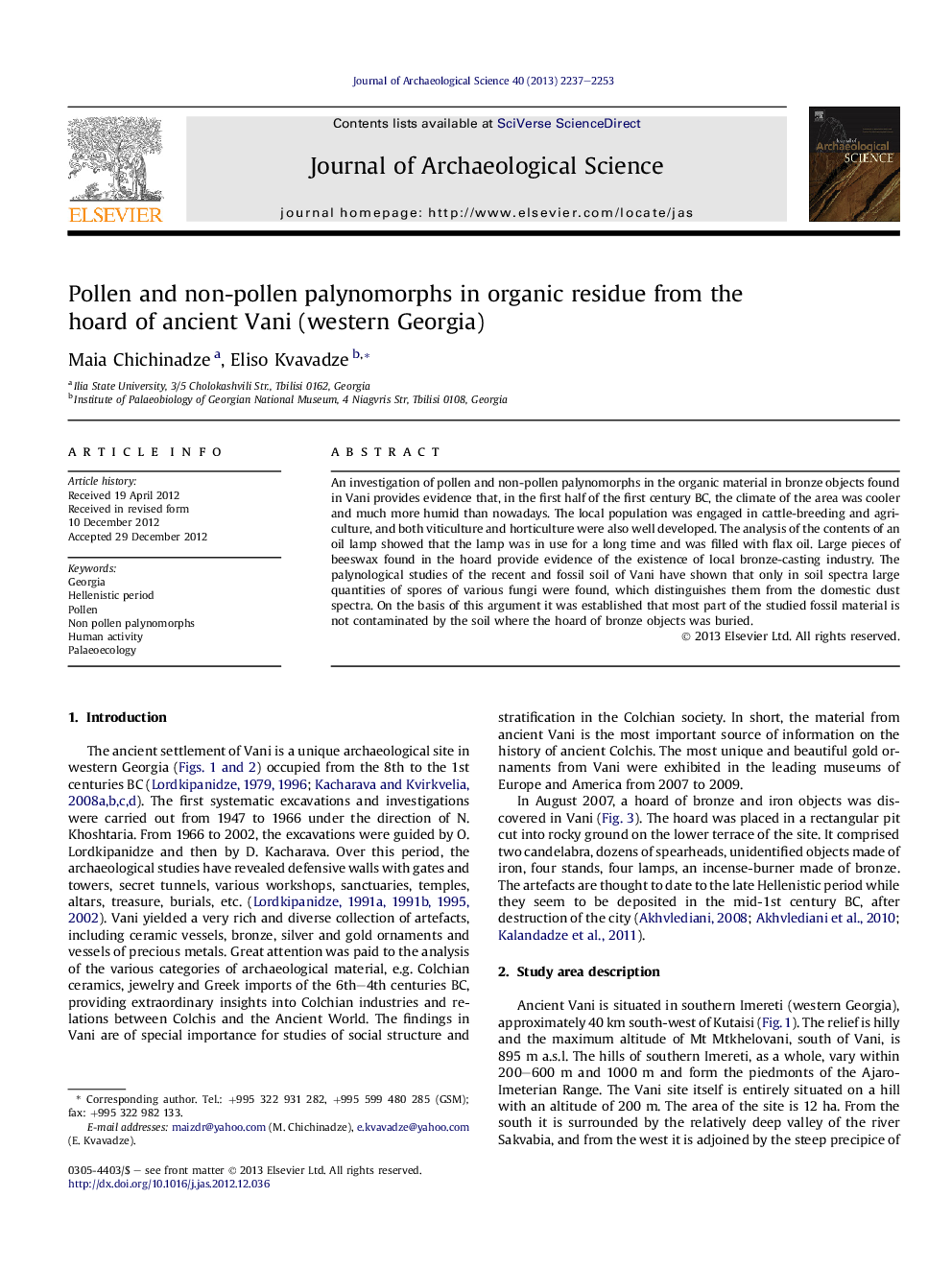| Article ID | Journal | Published Year | Pages | File Type |
|---|---|---|---|---|
| 1035539 | Journal of Archaeological Science | 2013 | 17 Pages |
An investigation of pollen and non-pollen palynomorphs in the organic material in bronze objects found in Vani provides evidence that, in the first half of the first century BC, the climate of the area was cooler and much more humid than nowadays. The local population was engaged in cattle-breeding and agriculture, and both viticulture and horticulture were also well developed. The analysis of the contents of an oil lamp showed that the lamp was in use for a long time and was filled with flax oil. Large pieces of beeswax found in the hoard provide evidence of the existence of local bronze-casting industry. The palynological studies of the recent and fossil soil of Vani have shown that only in soil spectra large quantities of spores of various fungi were found, which distinguishes them from the domestic dust spectra. On the basis of this argument it was established that most part of the studied fossil material is not contaminated by the soil where the hoard of bronze objects was buried.
► Vani's climate was cooler and more humid during the 1st century B.C. than now. ► The local population was engaged in cattle-breeding and agriculture. ► Pieces of wax and clay in the hoard are evidence of a bronze-casting industry. ► Pollen analysis shows that lamps were kept in different buildings. ► The Vani hoard was buried in summer.
